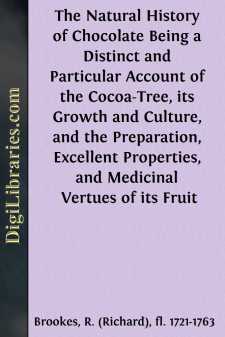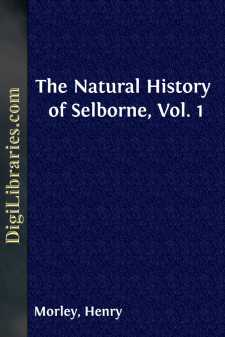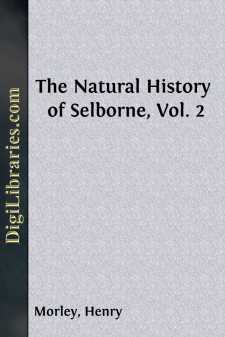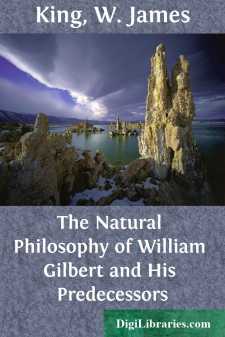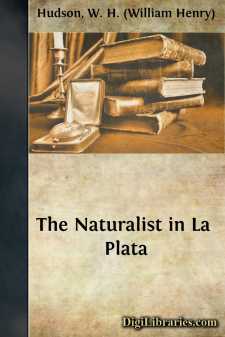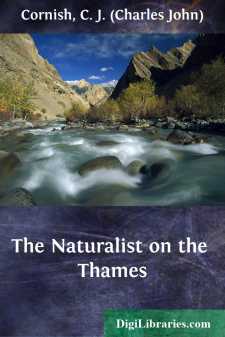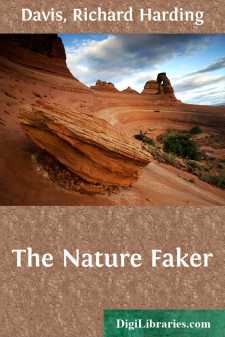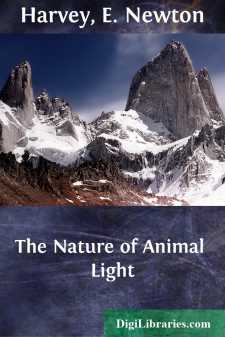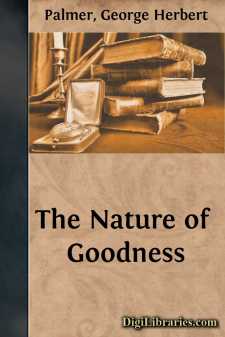Categories
- Antiques & Collectibles 13
- Architecture 36
- Art 48
- Bibles 22
- Biography & Autobiography 813
- Body, Mind & Spirit 142
- Business & Economics 28
- Children's Books 13
- Children's Fiction 10
- Computers 4
- Cooking 94
- Crafts & Hobbies 4
- Drama 346
- Education 46
- Family & Relationships 57
- Fiction 11828
- Games 19
- Gardening 17
- Health & Fitness 34
- History 1377
- House & Home 1
- Humor 147
- Juvenile Fiction 1873
- Juvenile Nonfiction 202
- Language Arts & Disciplines 88
- Law 16
- Literary Collections 686
- Literary Criticism 179
- Mathematics 13
- Medical 41
- Music 40
- Nature 179
- Non-Classifiable 1768
- Performing Arts 7
- Periodicals 1453
- Philosophy 64
- Photography 2
- Poetry 896
- Political Science 203
- Psychology 42
- Reference 154
- Religion 513
- Science 126
- Self-Help 84
- Social Science 81
- Sports & Recreation 34
- Study Aids 3
- Technology & Engineering 59
- Transportation 23
- Travel 463
- True Crime 29
Sort by:
CHAP. I. The Description of the Cocao-Tree. The Cocao-Tree is moderately tall and thick, and either thrives, or not, according to the Quality of the Soil wherein it grows: Upon the Coast of Caraqua, for instance, it grows considerably larger than in the Islands belonging to the French. Its Wood is porous, and very light; the Bark is pretty firm, and of the Colour of Cinnamon, more or less dark,...
more...
by:
Henry Morley
INTRODUCTION. Gilbert White was born in the village of Selborne on the 18th of July, in the year 1720. His father was a gentleman of good means, with a house at Selborne and some acres of land. Gilbert had his school training at Basingstoke, from Thomas Warton, the father of the poet of that name, who was born at Basingstoke in 1728, six years younger than his brother Joseph, who had been born at...
more...
by:
Henry Morley
INTRODUCTION. Gilbert White’s home in the quiet Hampshire village of Selborne is an old family house that has grown by additions, and has roofs of nature’s colouring, and creeping plants on walls that have not been driven by scarcity of ground to mount into the air. The house is larger, by a wing, now than when White lived in it. A little wooded park, that belongs to it, extends to a steep...
more...
by:
John Aubrey
MY DEAR SIR, BY inscribing this Volume to you I am merely discharging a debt of gratitude and justice. But for you I believe it would not have been printed; for you not only advocated its publication, but have generously contributed to diminish the cost of its production to the "WILTSHIRE TOPOGRAPHICAL SOCIETY", under whose auspices it is now submitted to the public. Though comparatively...
more...
by:
W. James King
Until several decades ago, the physical sciences were considered to have had their origins in the 17th century—mechanics beginning with men like Galileo Galilei and magnetism with men like the Elizabethan physician and scientist William Gilbert. Historians of science, however, have traced many of the 17th century's concepts of mechanics back into the Middle Ages. Here, Gilbert's explanation...
more...
CHAPTER I. THE DESERT PAMPAS. During recent years we have heard much about the great and rapid changes now going on in the plants and animals of all the temperate regions of the globe colonized by Europeans. These changes, if taken merely as evidence of material progress, must be a matter of rejoicing to those who are satisfied, and more than satisfied, with our system of civilization, or method of...
more...
THE THAMES AT SINODUN HILL Fresh water is almost the oldest thing on earth. While the rocks have been melted, the sea growing salter, and the birds and beasts perfecting themselves or degenerating, the fresh water has been always the same, without change or shadow of turning. So we find in it creatures which are inconceivably old, still living, which, if they did not belong to other worlds than ours,...
more...
Richard Herrick was a young man with a gentle disposition, much money, and no sense of humor. His object in life was to marry Miss Catherweight. For three years she had tried to persuade him this could not be, and finally, in order to convince him, married some one else. When the woman he loves marries another man, the rejected one is popularly supposed to take to drink or to foreign travel. Statistics...
more...
by:
E. Newton Harvey
CHAPTER ILIGHT-PRODUCING ORGANISMS The fact that animals can produce light must have been recognized from the earliest times in countries where fireflies and glowworms abound, but it is only since the perfection of the microscope that the phosphorescence of the sea, the light of damp wood and of dead fish and flesh has been proved to be due to living organisms. Aristotle mentions the light of dead fish...
more...
THE DOUBLE ASPECT OF GOODNESS In undertaking the following discussion I foresee two grave difficulties. My reader may well feel that goodness is already the most familiar of all the thoughts we employ, and yet he may at the same time suspect that there is something about it perplexingly abstruse and remote. Familiar it certainly is. It attends all our wishes, acts, and projects as nothing else does, so...
more...


